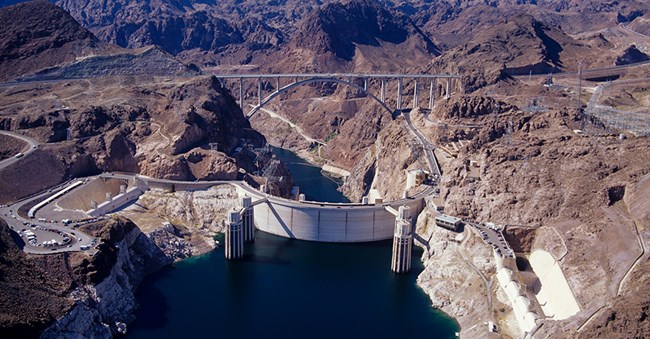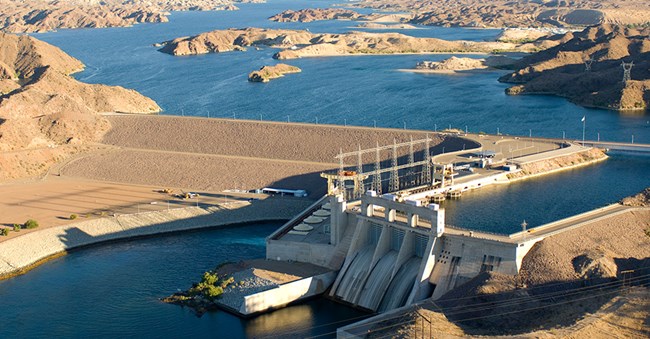
Bureau of Reclamation Hoover and Davis Dam: Creating HistoryTwo of the most influential developments in Western history rise from the Colorado River. Commonly known as Hoover Dam and Davis Dam, these iconic structures paved the way for supplying water and electrical power to our surrounding regions. Located about 70 miles apart between the borders of Arizona and Nevada, these dams created the reservoir famously known as Lake Mead and Lake Mohave respectively. Today, these massive features attract curious travelers from around the world looking to witness the building blocks of our Nation’s history. 
Bureau of Reclamation Hoover DamIn 1931 during The Great Depression, thousands of men from all over America traveled to southern Nevada’ Boulder Canyon area in hopes of finding work building a great dam on the Colorado River. They knew plans were in place to construct a dam to regulate flooding and control the mighty Colorado. As a secondary benefit, the dam was to supply electrical power first to its headquarters in Boulder City, then to California, and eventually Nevada and Arizona. For the first part of the project, the Colorado River water had to be transferred into tunnels drilled through the side of the canyon walls so construction of the dam could begin. 
Bureau of Reclamation Davis DamConstructed by the Bureau of Reclamation to meet the requirements of the 1944 Treaty with Mexico, Davis Dam was originally created to regulate the amount of water to be delivered downstream and eventually to Mexico. Located in Pyramid Canyon about 70 miles downstream from Hoover Dam, this zoned earth-fill dam consists of concrete spillway, powerplant, and intake structures. During its creation almost 4,000,000 cubic yards of materials were gathered from the surrounding area, 23 million pounds of reinforcing steel were used, and almost 600,000 cubic yards of concrete were dispersed between the dam, spillway, powerplant and other facilities related to the dam. With construction of Davis Dam, water flow and delivery operations were coordinated between Davis and Hoover Dam. The reservoir created below Davis Dam, known as Lake Mohave, is a very popular destination for travelers and offers miles of lakeside water activities and adjacent recreation trails allowing visitors to access historic Davis Camp and wide-open areas to explore. The More You Know
|
Last updated: December 15, 2022
